Key Protagonists and Themes of Advent
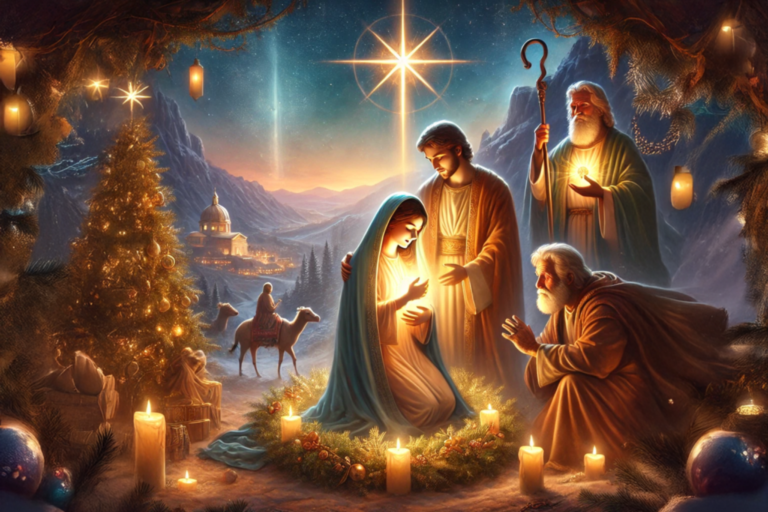
During these weeks, the liturgy guides us in rereading the events of our history, inviting us to set out on a journey and remain alert for the moment of consolation and restoration that is approaching. As we draw closer to the celebration of Christ’s birth, let us reflect on how we can live this time with authenticity and purpose, following the example of those who came before us in faith.
Isaiah, Prophet of Consolation and Promise
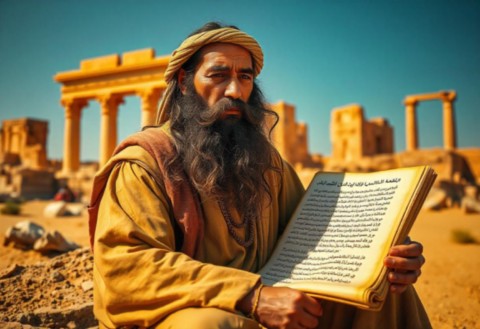
During Advent, the book of Isaiah plays a fundamental role in delivering a message of hope and announcing the coming of the Messiah. Throughout this time, passages from Isaiah are read in a semi-continuous manner, focusing on prophecies that prepare us for the celebration of Christmas. Phrases such as “Comfort, comfort my people” (Isaiah 40:1) and the call to “prepare the way of the Lord” (Isaiah 40:3) resonate in our hearts, reminding us of the importance of spiritual preparation and the comfort brought by the arrival of our Saviour.
The first Sunday of Advent features readings that point to both the final coming of the Lord in glory and His first coming, with Isaiah’s prophecies at the centre. “Come, let us walk in the light of the Lord,” recognizing that the Lord is the Potter, and we are the clay in His loving hands. We are masterpieces in the hands of the Lord! (cf. Is 63). These are some of the phrases heard during the first days of Advent. Isaiah’s readings for the second and third Sundays include classic prophecies, such as the shoot that springs from the stump of Jesse (Isaiah 11:1) and the voice crying in the wilderness (Isaiah 40:3), which are fulfilled in Jesus’ birth and John the Baptist’s ministry.
John the Baptist, Prophet from the Margins

John the Baptist holds a particularly significant role during the Advent cycle, acting as the forerunner of Christ’s arrival. His ministry is characterized by an urgent call to conversion and preparation for the Lord’s coming. A voice echoes from the desert and the margins of the world, crying out for liberation, calling for the correction of all signs of exclusion, and invoking justice and righteousness. John the Baptist’s figure stands out in the Gospels read during Advent, especially on the second and third Sundays, where his message of transformation and expectation is highlighted: “His kingdom is near.”
In the context of Advent, John the Baptist’s proclamation, “Prepare the way of the Lord, make straight His paths” (Luke 3:4), encapsulates the essence of this liturgical season, marked by anticipation and preparation for the celebration of Christmas. His ascetic lifestyle and preaching in the wilderness serve as a model for reflecting on the simplicity of our lives, the humility of announcing the Good News, and the urgency of liberating the oppressed and excluded.
Elizabeth and Zechariah: From Observance of the Law to the Newness of the Gospel
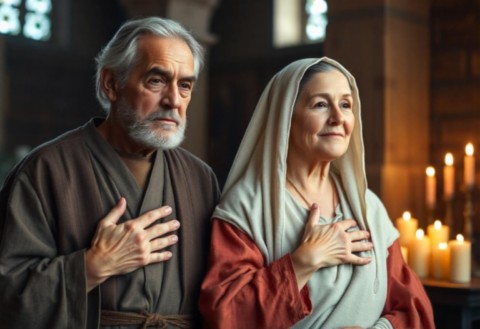
Both play significant roles during Advent, especially in the anticipation and coming of the Messiah. In the Gospel of Luke (chapter 1), Zechariah hears the voice of the angel Gabriel in the temple. This man, though righteous and good, is elderly and childless, reflecting the aging and rigidity of the “saints and the law of Moses.” Elizabeth, also advanced in age, contrasts with Mary’s youth and vitality. Elizabeth and Zechariah have no heir, but their faith in God’s promises will allow Him to hear their prayers.
The announcement of their son John the Baptist’s birth by the angel Gabriel is a crucial moment for Zechariah. The angel says, “Do not be afraid, Zechariah, for your prayer has been heard; and your wife Elizabeth will bear you a son, and you will name him John” (Luke 1:13). John will be the forerunner and greatest prophet, crying out in the wilderness the arrival of God’s Kingdom and justice.
Moreover, Elizabeth’s meeting with Mary, who visits her after the Annunciation, highlights the joy and recognition of God’s presence. Filled with the Holy Spirit, Elizabeth proclaims Mary as “the mother of my Lord,” and her unborn child, John, leaps for joy in her womb at Mary’s greeting. This meeting between the two women symbolizes the union of the old with the new, where the law of Moses meets the newness of the wine brought by Christ. This moment underscores the interconnectedness of their roles in salvation history and the joy that accompanies the Advent season.
Saint Joseph, Man of Silence and Availability
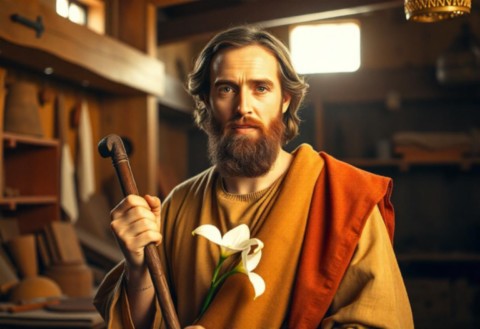
Saint Joseph plays a crucial role during Advent, especially in the context of awaiting the birth of Jesus. Though he utters no words throughout the New Testament, he is entrusted by God with the task of welcoming, caring for, protecting, and guiding Mary and the Child. The dreams in which God reveals His will to this carpenter testify to his readiness to listen to the divine voice. Saint Joseph is a man of discernment and action, operating in the shadows without seeking recognition. His acceptance of God’s plan, despite the uncertainties and potential criticism he faced, serves as an inspiring example for us all during this time of reflection and waiting.
In a world where recognition, photos, and “likes” often seem important, Saint Joseph stands as an essential model for missionary action and the animation of our churches in proclaiming the Gospel. He, the carpenter of Nazareth, introduces the Child who will proclaim the Kingdom.
The Church celebrates his virtues and his essential role within the Holy Family, emphasizing his obedience and fidelity to God’s promises—qualities that are vital in preparing for Christ’s coming. During Advent, Saint Joseph is invoked as a model of faith and a figure of silent strength.
Mary: Woman of Advent, Mother of Hope
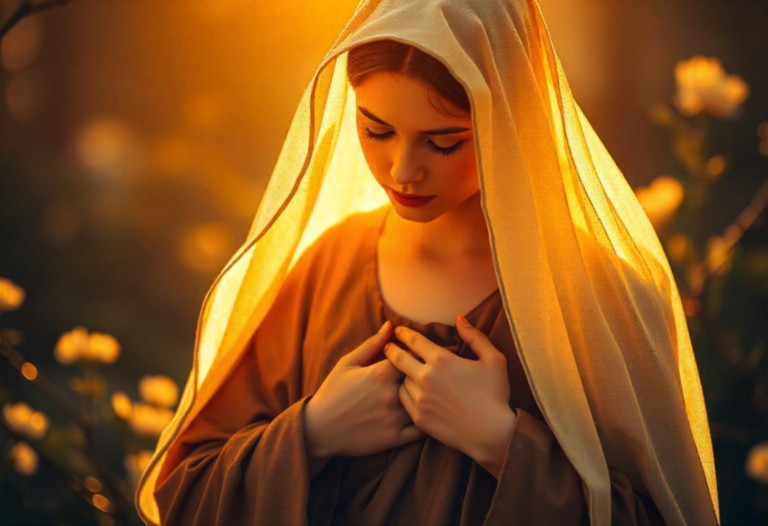
During Advent, the Church emphasizes the fundamental role of the Virgin Mary in the mystery of salvation. The liturgy of this season is filled with references to Mary, especially from December 17 to 24, when the readings evoke the ancient prophecies about the Virgin Mother and the imminent birth of the Redeemer Messiah and Prince of Peace.
In Mary, the promises whispered through the ages are fulfilled. The faithful and humble who remained steadfast in hope have found light and salvation in Jesus. And Mary represents all the poor of Yahweh, faithful to the Words and Promises of the Most High.
Advent has a deeply Marian character, as the Church invites us to follow Mary’s example of faith and humility while longing for the arrival of our Saviour. All of creation, in its humility, waits and yearns, like a mother longing for the child within her.
Together with Mary, and with all the holy women and men of God throughout history, we raise our voices in a song of hope: Maranatha, come Lord, do not delay. Come to dispel the darkness of hatred and division, renew the face of the earth, bring down the mighty from their thrones, and lift up the humble.
May Mary, the first missionary and disciple, accompany us daily in this waiting. May her faith and strength serve as an example for us to remain vigilant, awake, and joyful as we await the dawn of the new day of salvation.

